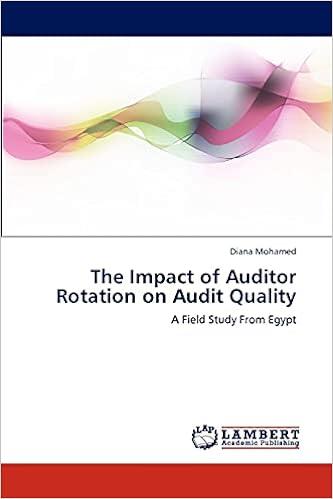Question
Raggedy Anne Inc. is a toy manufacturer and retailer and follows IFRS. Currently, the company has three manufacturing facilities and about 100 retail outlets. You
Raggedy Anne Inc. is a toy manufacturer and retailer and follows IFRS. Currently, the company has three manufacturing facilities and about 100 retail outlets. You have just started work in the accounting department as an assistant to the controller. The accounting department has been extremely short staffed for an extended period and as such many entries have not yet been posted. It is early January 20X6, and the controller has asked you to prepare all required journal entries for the transactions that follow, including any required adjusting entries at year end for the year ended December 31, 20X5:
1. On February 1, 20X5, Raggedy issued a bond to raise money for financing more retail outlets. The 6% bonds have a face value of $5,000,000 and are due in seven years. Interest is paid semi-annually on July 31 and January 31. At the time the bonds were issued, the market rate of interest for similar bonds was 5%. Legal costs directly related to the issuance of the bonds totalled $250,000. No entries have been recorded yet for any of the events related to the bond issue. Interim interest calculations are based on the number of months, rather than days. As part of your calculation, calculate the effective rate of interest to four significant digits, for example, x.xxxx%.
2. On January 1, 20X5, Raggedy received new equipment from a vendor costing 3,500,000 which was available for use when received. Raggedy paid 1,500,000 at time of delivery and signed a 2,000,000 interest-free note payable due December 31, 20X6, which was paid on the due date. The annual market rate of return for loans of similar risk was 4%. Relevant exchange rate information follows: January 1, 20X5 1.00 = C$1.48 December 31, 20X5 1.00 = C$1.53 Average exchange rate January 1 to December 31 1.00 = C$1.51 The equipment is expected to last 10 years with a residual value of $0 at that time. The company depreciates all its equipment on a straight-line basis based on the number of months available for use.
3. Raggedy has a customer loyalty program at its retail outlets. For each dollar spent on qualifying purchases, the company provides registered customers with one reward point purchased from an outside supplier. Pertinent information related to the rewards program follows: In 20X5, Raggedy had total sales of $30,000,000 in its retail outlets, $24,000,000 of which was to registered customers. The sales were properly recorded when made. Raggedy pays the outside supplier $0.02 per point awarded. Payment is due on January 31 each year for the points awarded in the previous calendar year.
4. Raggedy provides a one-year warranty on the sale of all its toys. During 20X5, warrantable toy sales totalled $10,000,000; however, $500,000 were returned for store credit. The sales and returns for the year have already been properly recorded. The warranty obligation for the year is estimated to be 2% of net sales. The warranty obligation balance as at December 31, 20X4, was $130,000. Actual warranty costs incurred during 20X5 were $160,000, which have been properly recorded. The company accounts for warranty expense as a year-end adjusting entry. During the year all warranty-related costs are debited to the provisions account.
5. Raggedy repurchased 200,000 common shares on December 31, 20X5, for $6,400,000. The balance in the common shares account just prior to the repurchase was $30,000,000 and represented 1,200,000 shares issued and outstanding. The contributed surplus common shares account has a credit balance of $740,000.
Prepare the Journal Entries for the above.
4.
Step by Step Solution
There are 3 Steps involved in it
Step: 1

Get Instant Access to Expert-Tailored Solutions
See step-by-step solutions with expert insights and AI powered tools for academic success
Step: 2

Step: 3

Ace Your Homework with AI
Get the answers you need in no time with our AI-driven, step-by-step assistance
Get Started


